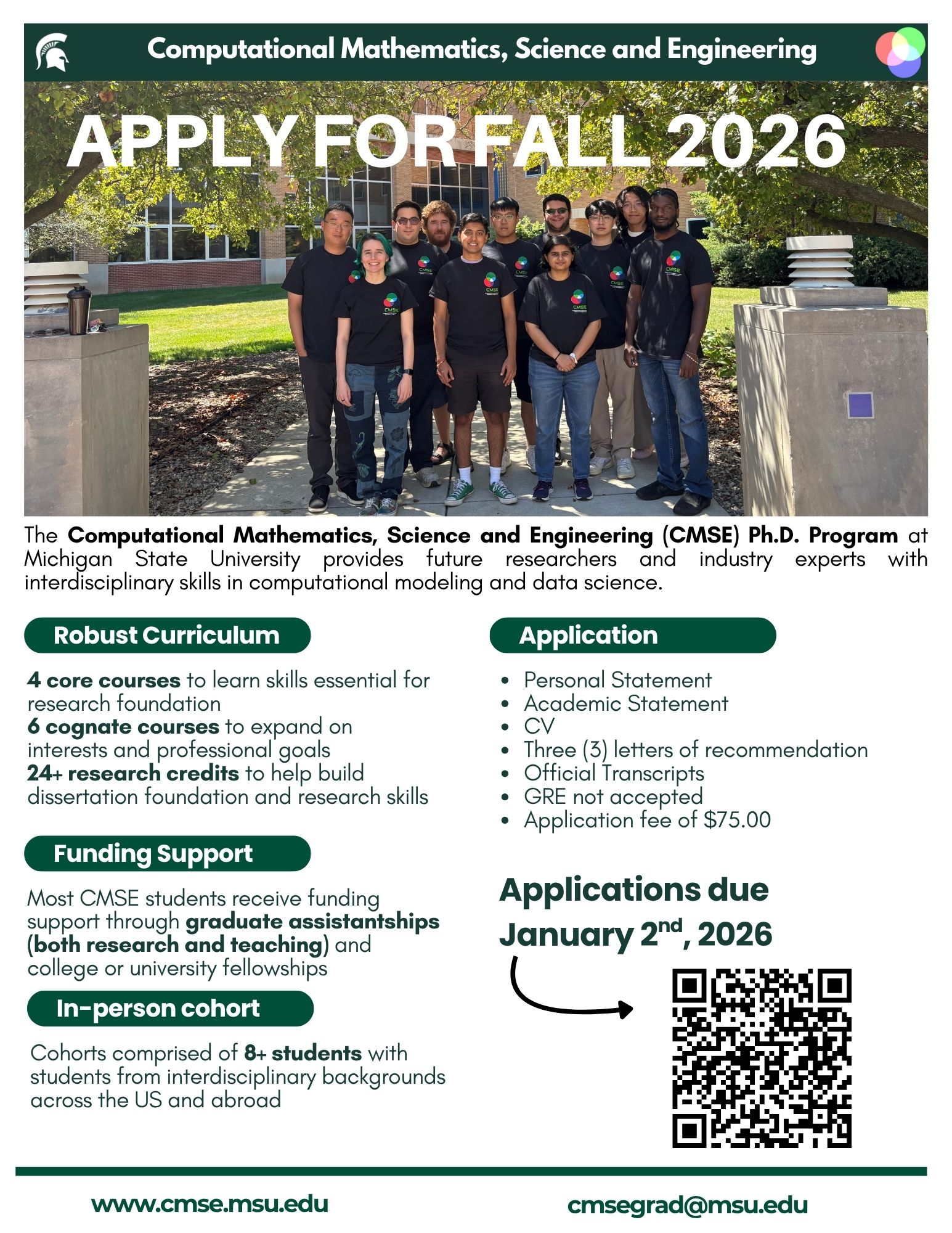Comprehensive Exam of CMSE Zhiyuan She
Department of Computational Mathematics, Science & Engineering
Michigan State University
Comprehensive Exam Notice
Sep. 27th 1:00pm - 2:30 pm, 1420EB
Zoom link: https://msu.zoom.us/j/2338589328
Passcode: 239733
Machine Learning-based Stochastic Reduced Modeling of General Langevin Equations (GLE) and State-dependent-GLE
Zhiyuan She
Abstract:
An important challenge in constructing the reduced dynamics of molecular systems is accurately modeling the non-Markovian behavior that arises from the dynamics of unresolved variables. This issue is primarily due to the lack of scale separation, leading to reduced dynamics that typically exhibit significant memory effects and non-white noise terms. We propose two data-driven approaches to learn reduced models for multi-dimensional resolved variables while faithfully capturing non-Markovian dynamics. Unlike common methods that directly construct the memory function, our approach identifies a set of non-Markovian features that encapsulate the history of the resolved variables. We then establish a joint learning framework for the extended Markovian dynamics involving both the resolved variables and these features. The training process involves matching the evolution of the correlation functions of the extended variables, which can be directly derived from the correlation functions of the resolved variables. The first model we develop approximates the multi-dimensional generalized Langevin equation and ensures numerical stability without requiring empirical adjustments. We validate the effectiveness of this method by applying it to construct reduced models for molecular systems with one-dimensional and four-dimensional resolved variables. The second model considers the dependence of the memory kernel and mass on position. We demonstrate that this second approach outperforms the first model through examples involving one-dimensional and two-dimensional resolved variables. Future work will connect our current work with stochastic control problems.
Committee:
Huan Lei (chair)
Di Liu
Michael Murillo
Yimin Xiao



